Chinese Central SOEs Support Connectivity and Communications with Transport Construction
Transport facilities are a base for cooperation and development. Chinese central state-owned enterprises have been focusing on building key passages and linking main cities and projects to create a convenient traffic network and improve connectivity and communications.
The Moscow Metro in Russia - the first China-built metro in Europe
The project was about constructing the third transfer line in southern Moscow and has become a landmark of China-Russia friendship.
It was the first time a Chinese enterprise had engaged in metro construction in a European country, and was a chance for the full Chinese engineering industrial chains including equipment, technology, design and standards to enter the European market.
During the construction, China Railway Construction Corporation Limited (CRCC) set a record by digging as far as 21 meters in 12 hours and 35 meters a day, which was the fastest speed ever in this area of Russia.
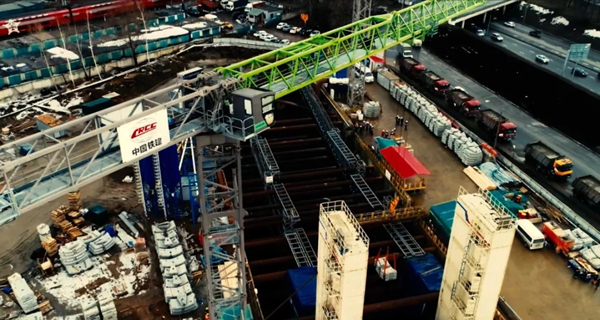
The metro section in southern Moscow was the first time a Chinese enterprise had been engaged in metro construction in a European country. [Photo/sasac.gov.cn]
Addis Ababa–Djibouti Railway - first overseas railway built with full Chinese engineering industrial chain
The 760-kilometer Addis Ababa–Djibouti Railway was the first overseas railway project built and operated with the full Chinese engineering construction chain which includes investment and financing, design, construction, main equipment materials, monitoring, trains and operation.
The railroad has become a main passage for transportation and exports in Ethiopia and the hinterland of East Africa, greatly improving the traffic condition and trading efficiency of Ethiopia and Djibouti.
The railway also has a positive impact on neighboring countries and is regarded as "a new engine of African economic development".
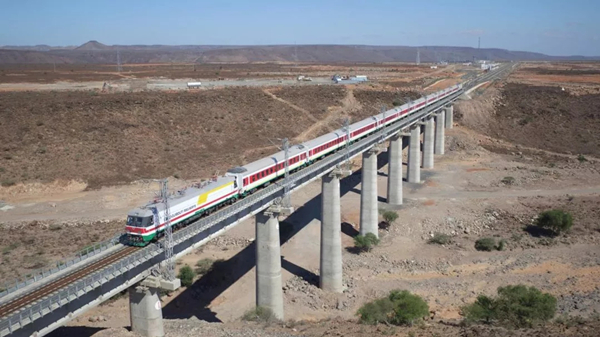
Addis Ababa–Djibouti Railway has become a main passage for exports of Ethiopia and the hinterland of East Africa and transportation. [Photo/sasac.gov.cn]
Benguela Railway in Angola - longest railway Chinese enterprise built overseas in one continuous phase
The 1,344-kilometer Benguela Railway in Angola runs through the entire Angola area and was the longest railway built by a Chinese company in one continuous phase in this century.
The rail road will connect with the Angola-Zambia Railway, Tanzania-Zambia Railway and railway networks in neighboring countries to realize the connectivity and communications in southern Africa and to form an international railway passage from the Atlantic to the Indian Ocean.
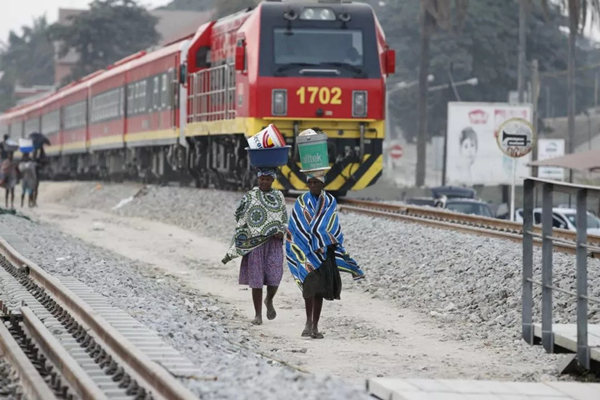
The Benguela Railway in Angola is the longest overseas Chinese-enterprise-built railway constructed in one continuous phase. [Photo/sasac.gov.cn]
Ankara-Istanbul High-speed Railway in Turkey - first China-built overseas high-speed railway
The Ankara-Istanbul High-speed Railway was China's first high-speed railroad construction project in Europe, which was the start of China's entry to the European high-speed railway construction market and marked that China has the competitiveness to compete with other countries in this field.
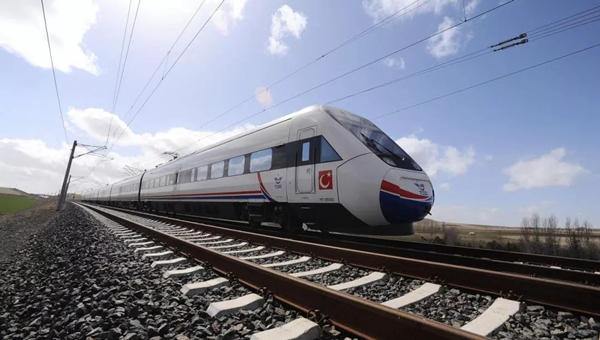
Ankara-Istanbul High-speed Railway in Turkey was the first China-built overseas high-speed railway. [Photo/sasac.gov.cn]
The Mombasa-Nairobi Standard Gauge Railway - Kenya's flagship projects
The Mombasa-Nairobi Standard Gauge Railway is about 480 kilometers and is a flagship project of Kenya Vision 2030 which aims to transform the country into a newly industrializing, middle-income nation which can provide its citizens with a high quality of life and a clean and secure environment by 2030.
The project was contracted by China Road and Bridge Corporation (CRBC), affiliated to China Communications Construction Company Ltd (CCCC).
A total of 56 diesel locomotives of three types, manufactured by CRRC Corporation Limited (CRRC), are operating on the railway.
Meanwhile, CRRC also established an operation system and cultivated technical talents to manage the trains.

The Mombasa-Nairobi Standard Gauge Railway [Photo/sasac.gov.cn]
Peshawar-Lahore Motorway - a main highway in Pakistan
The Peshawar-Lahore Motorway is the largest transportation infrastructure construction along the China-Pakistan Economic Corridor and is a key national defense passage running through the country from North to South.
The total distance of the motorway is 392 kilometers, containing five over 200-meter bridges. Traffic pressure in areas with the densest population and the best economic status will be relieved when it is completed.
It will also promote the economic development in Pakistan and contribute to connectivity and communication between China and the country.
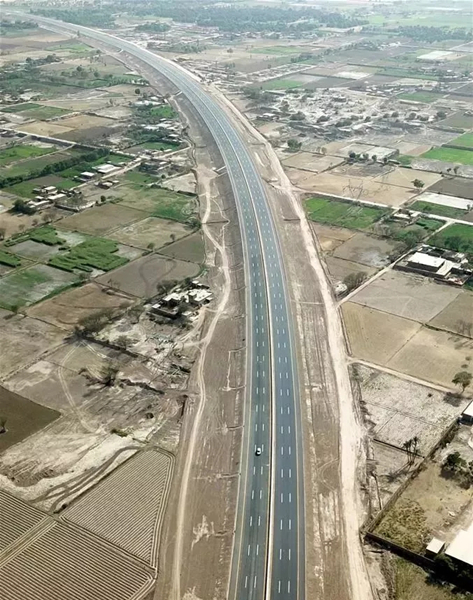
The Peshawar-Lahore Motorway will help relieve traffic pressure alongside and promote economic development in Pakistan. [Photo/sasac.gov.cn]
China-Maldives Friendship Bridge - the first modern bridge in Maldives
The China-Maldives Friendship Bridge, contracted by CCCC, was the first modern cross-sea bridge in Maldives. The 2-kilometer bridge, with a 760-meter main section, connects the Male Island and the Airport Island.
The main section of the bridge is 760 meters and the bridge is planned to be used for 100 years.
Before the bridge was built, people could only travel between islands through sea and air, which is very inconvenient. The cross-sea bridge was a dream for its people for many years.
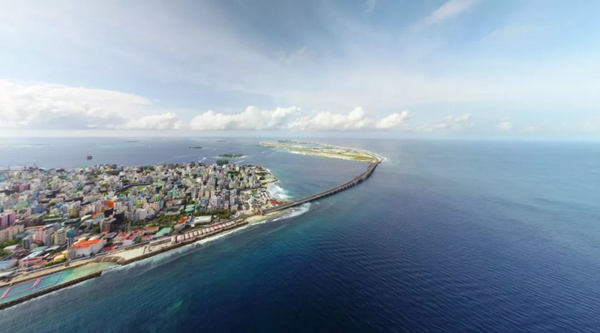
China-Maldives Friendship Bridge was the first modern cross-sea bridge in Maldives, which makes it more convenient for its people to travel between islands. [Photo/sasac.gov.cn]
Maputo-Katembe Bridge - a suspension bridge with the largest span in Africa
The Maputo-Katembe Bridge in Mozambique, contracted by CCCC, is a suspension bridge with the largest span in Africa currently. It is about three kilometers long and 680 meters wide. It has made a foundation for a rapid development of southern Mozambique and even the entire southern Africa.
Its construction had provided 3,788 jobs for local people and cultivated more than 5,000 technical workers.
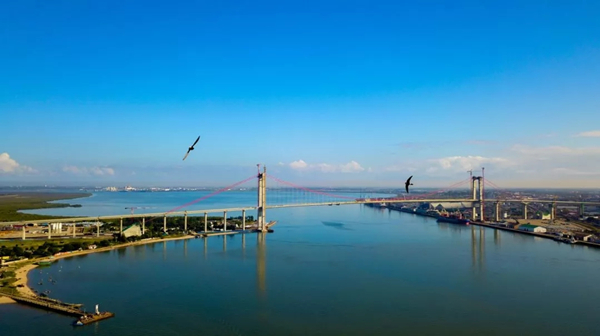
The Maputo-Katembe Bridge in Mozambique has made a foundation for a rapid development of southern Mozambique and even the entire southern Africa. [Photo/sasac.gov.cn]
(Executive editor: Li Shuling)



